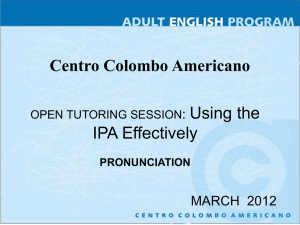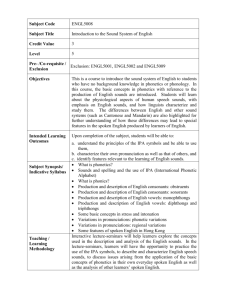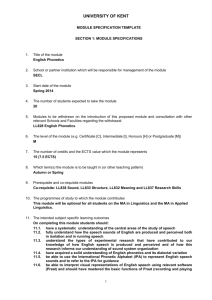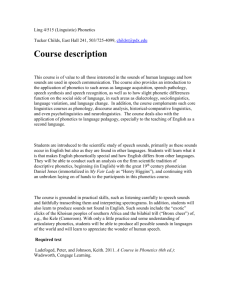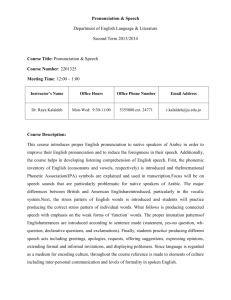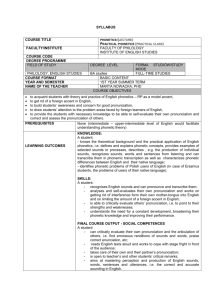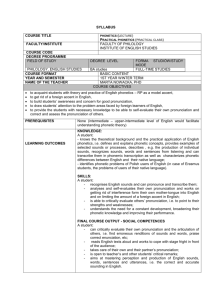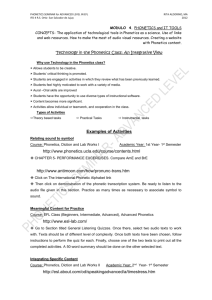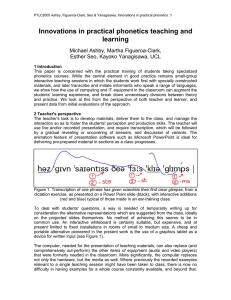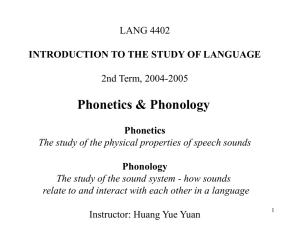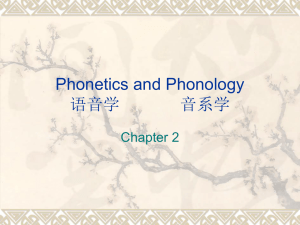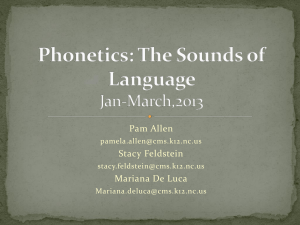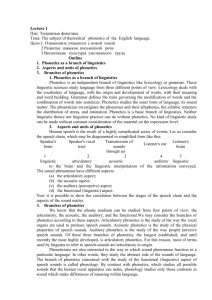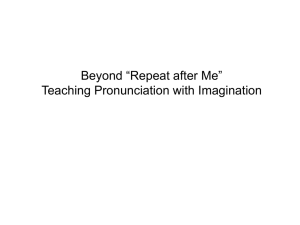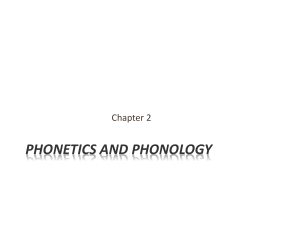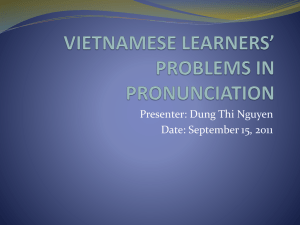Pronunciation in a College-Level Beginner French Course Teaching
advertisement
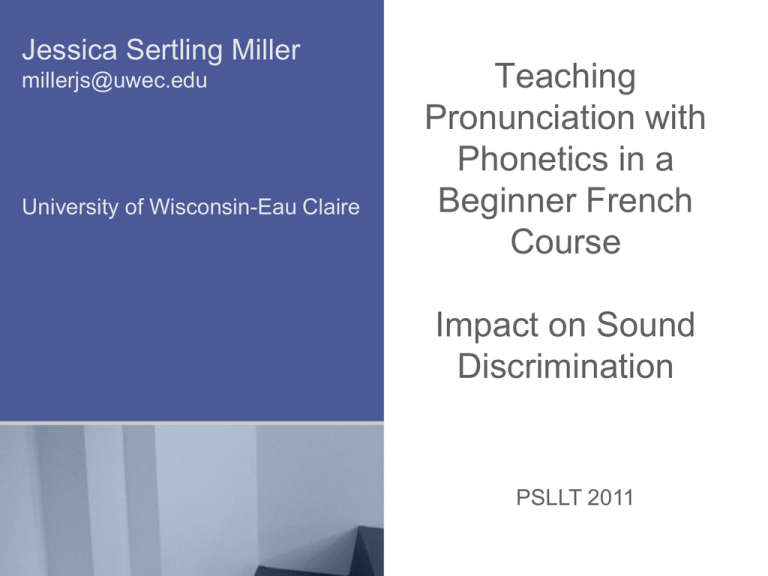
Jessica Sertling Miller millerjs@uwec.edu University of Wisconsin-Eau Claire Teaching Pronunciation with Phonetics in a Beginner French Course Impact on Sound Discrimination PSLLT 2011 Introduction Phonetics taught in advanced classes Why not earlier? Phonetics in French 101? 2 Observations Balancing writing & speaking Challenges: time constraints, students’ varied abilities and interest, teachers’ training. 3 Attitudes Rated as “very important” by students Pronunciation - 90% Vocabulary - 86% Grammar - 73% Culture - 43% 4 Phonetics 101: Potential Benefits To avoid fossilization To apply concepts early on To give students learning tools 5 Phonetics 101: Potential Drawbacks IPA symbols = foreign code Time-consuming Not communicative, not authentic 6 Pedagogical Goals Acquisition of fundamental principles Intelligibility Functionality 7 Research Questions Explicit instruction = positive impact (Elliot on Spanish L2 pronunciation, 1997) IPA = positive impact (Kendrick on English L2 pronunciation and discrimination, 1997) IPA = efficient teaching tool (Morin on Spanish teaching education, 2007) 8 What impact on speaking and listening in a beginner college French course? Experimental Design 4 target sets of sounds 2 teaching methods Counterbalanced groups 15-minute lessons, every 2 weeks Sound discrimination test after each lesson 10 Target Sounds Reference Approach Comparing & contrasting Reflection on spelling to sound Repetition of sounds Written & oral application 12 Phonetics Approach Comparing & contrasting (IPA) Reflection on spelling to sound Articulatory information Repetition of sounds Written & oral application (IPA) 13 Results: Discrimination “Among the teaching techniques used by your instructor this semester, describe one or more that you feel helped improve your listening comprehension of French and explain how it helped.” Teaching & Learning Survey Content Analysis Discussion Explicit instruction preferred by learners Phonetic approach is favored by them: it addresses various learning styles. Short-term vs. long-term effect? 17 In Support of Phonetics Importance of explicit instruction IPA shows what is not heard Learning tool: notes, dictionaries Assessment tool: written and oral exams 18 Conclusion Two ways of approaching instruction What matters: drawing attention Phonetics 101 to prepare for 300 level 19 Learners’ Comments • • “The handouts describing the differences in pronunciation (...) were very helpful. Rather than overwhelming the class with all sorts of pronunciation rules, it focused in on some of the most important and allowed us to directly compare two (or more) commonly mispronounced sounds.” “I thought when we used the phonetic symbols with different words such as vous and vu, and the teacher explained the difference between them, was very helpful to me.” 20 Learners’ Comments • • “I think the phonetics alphabet helped me. Sometimes you look at a word and trying to pronounce it seems overwhelming, but having it written in only phonetics tells you exactly what sounds to make.” “(...) I would have liked to spend more time with pronunciation. For example, doing more exercises with different partners, or going over some of the more difficult words for 5 mins. at the beginning of each class period.” 21 Future Research Exploring current pedagogies Designing communicative tasks using IPA 22 Thank You! UW-System Leadership Site for the Scholarship of Teaching and Learning UW-System Office of Professional and Instructional Development UW-Eau Claire Summer Research Experiences for Undergraduates UW-Eau Claire Student Differential Tuition Funds UW-Eau Claire Center for Excellence in Teaching and Learning 25
